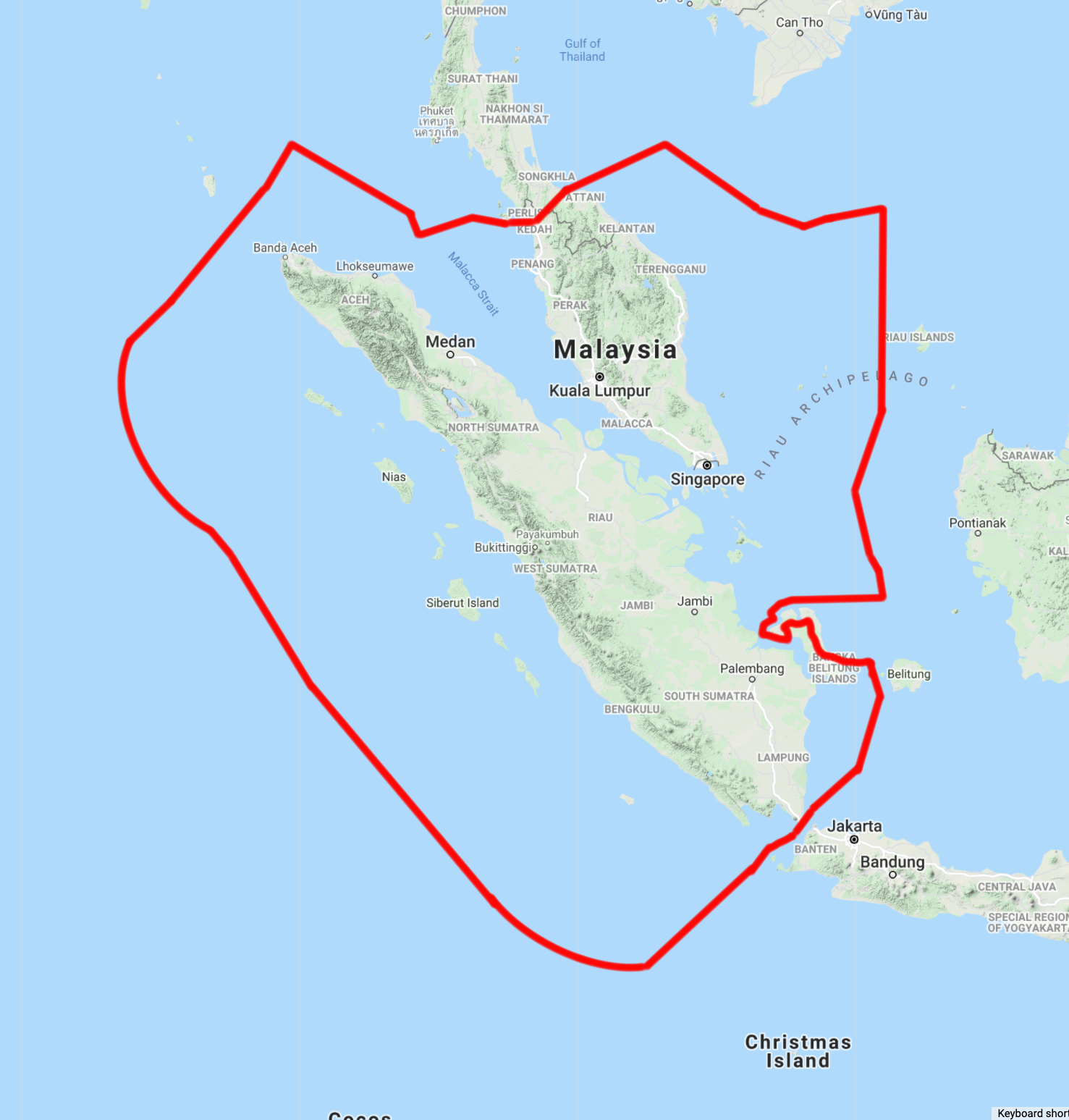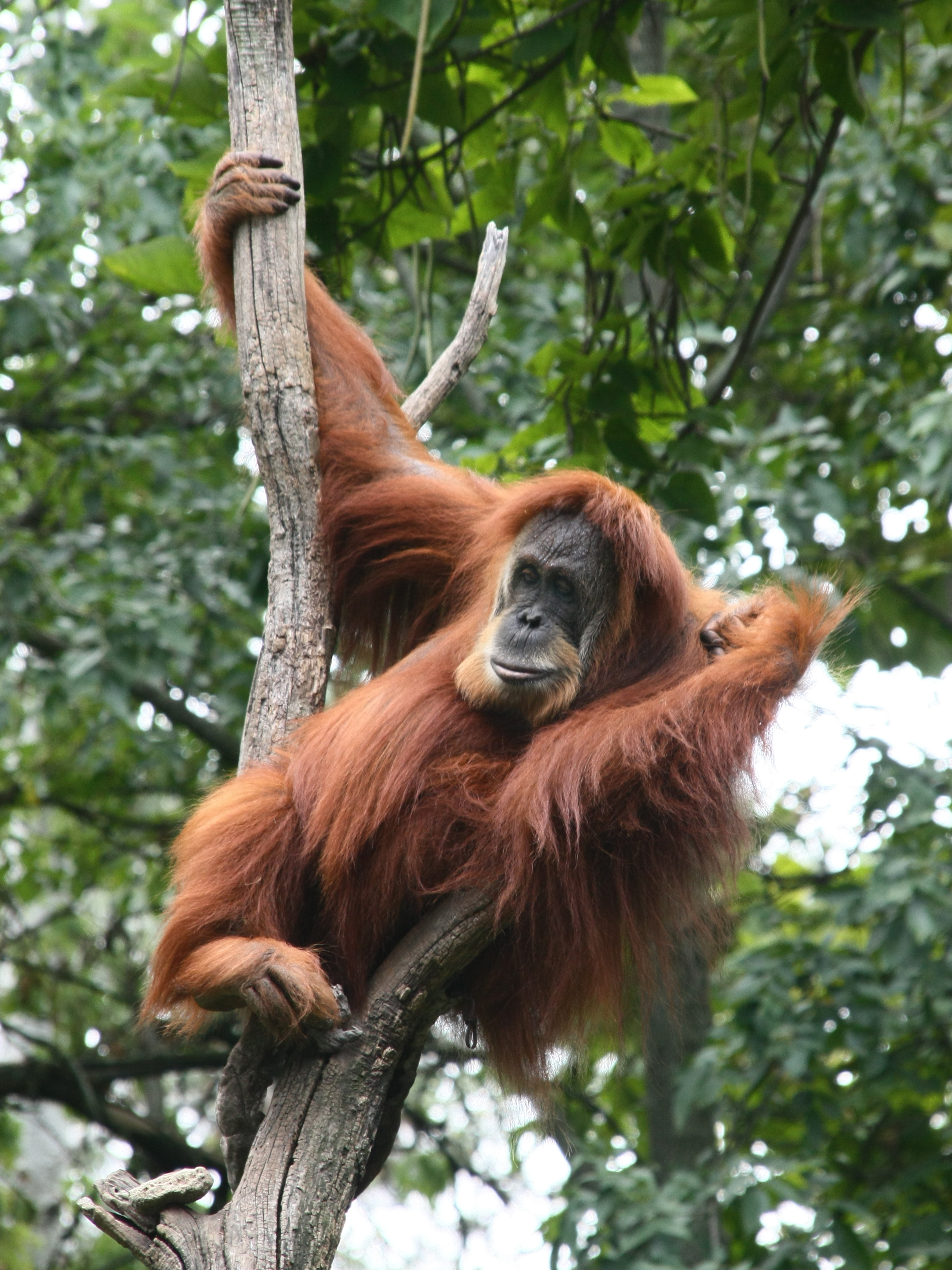How the spectacular Sumatran orangutan is essential to its ecosystem
- Nature Conservation
- Land Conservation
- Iconic Species
- Forests
- Wildlife
- Mammals
- Biodiversity
- Malaysia & Western Indonesia
- Indomalaya Realm
One Earth’s “Species of the Week” series highlights an iconic species that represents the unique biogeography of each of the 185 bioregions of the Earth.
With coarse orange hair, elongated limbs, a distinctive coconut-like mouth, and deeply expressive eyes, orangutans have long captivated their human relatives. They diverged from other hominids, such as gorillas, chimpanzees, and humans, between 19.3 and 15.7 million years ago. Today, orangutans inhabit only the rainforests of Indonesia and Malaysia.
There are three distinct species of orangutans:
- Bornean orangutan: Indigenous to Borneo
- Tapanuli orangutan: Resides solely in South Tapanuli on the island of Sumatra
- Sumatran orangutan: Located slightly northwest in Sumatra
Sporting slimmer faces with lengthier, paler, red-hued hair, the Sumatran orangutans are pivotal to their rainforest habitat. They have a more fruit-centric diet compared to their counterparts, acting as seed dispersers and aiding in maintaining biodiversity.

Sumatran orangutans are the iconic species of the Peninsular Malaysian & Sumatran Tropical Rainforests bioregion (IM18) located in the Malaysia & Western Indonesia subrealm.
Physical Characteristics and Behavior
Male Sumatran orangutans can grow up to 1.7 m (5.6 ft) tall and weigh around 90 kg (200 lb). In contrast, females are somewhat smaller, averaging 90 cm (3.0 ft) in height and 45 kg (99 lb) in weight. Despite their considerable size, these creatures are primarily arboreal, making their homes amidst the treetops. As the heaviest tree-dwelling mammals, they exhibit:
- Slow, deliberate movement
- Prolonged contact with branches
- A vast array of postures to gauge branch weight limits
Their movements and diet contribute immensely to the ecosystem. Consuming a variety of fruits, notably figs, jackfruits, and seeds from the Neesia tree, they help rejuvenate the rainforest through their waste.
Cultural Significance and Tool Use
In the native Malay language, 'orangutan' is derived from orang (meaning 'person') and hutan (meaning 'forest'). Aptly termed "people of the forest," Sumatran orangutans exhibit remarkable tool usage, including utilizing sticks to extract termites, poking bee nests to harvest honey, and employing crafted sticks to open Neesia fruit, avoiding the ingestion of painful fiberglass-like hairs.
Over their lifespan, these primates amass a collection of "toolboxes" filled with handy sticks, twigs, and stones.

Life Stages
Sumatran orangutans, akin to humans, experience defined life phases:
- Infancy: Weighing just a few kilograms, infants are primarily carried by their mothers.
- Juvenile (2.5-5 years): Weighing around 15 kilograms, they engage in playful interactions and embark on brief exploratory ventures.
- Adolescent (5-8 years): Weighing roughly 30 kilograms, their bonds extend beyond maternal connections. Post-adolescence, females mature and start having their offspring, while males enter a sub-adult phase.
- Adulthood (post 15 years): Males attain full maturity, reaching their maximum weight.
Given optimal living conditions, Sumatran orangutans can have a lifespan ranging from 53 to 58 years. However, the burgeoning palm oil industry poses a severe threat, as vast forest areas are cleared for plantations. As of 2000, this species was categorized as 'critically endangered' on the IUCN Red List, given Sumatra's alarmingly high deforestation rates. Thus, safeguarding these rainforests is paramount for the conservation of Sumatran orangutans.
.jpg?auto=compress%2Cformat&w=1440)


